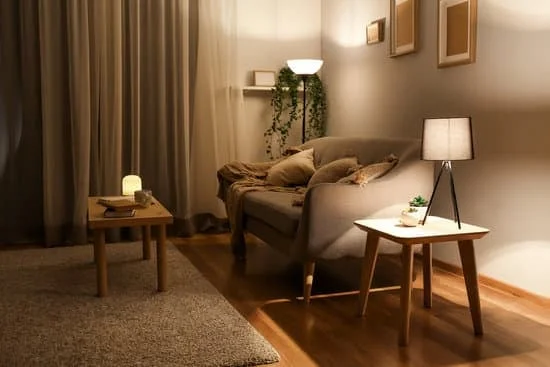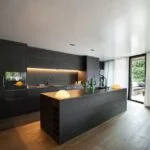Are you looking to bring a touch of nostalgia and vintage charm to your home? If so, then learning how to decorate a 1940 home can be an exciting and rewarding project.
The 1940s was a time of significant change in both architecture and design, with homes reflecting the influence of war-time austerity and the emerging mid-century modern style. In this article, we will explore the unique charm of 1940s homes and provide valuable tips on embracing the vintage aesthetic while still incorporating modern conveniences.
When it comes to decorating a home from the 1940s era, understanding its architectural and design elements is crucial. From classic features like hardwood floors and built-in cabinetry to charming details such as glass doorknobs and colorful tile work, these homes boast a distinctive character that sets them apart from their counterparts in other decades. Embracing these elements can help create an authentic vintage look that pays homage to the past while still feeling relevant today.
One of the key aspects of decorating a 1940s home is getting the color scheme just right. Choosing paint colors that complement the era can set the tone for the entire decor scheme, helping to create a cohesive look throughout the space.
Additionally, integrating vintage and mid-century modern furniture pieces, using retro fabrics and wallpaper, finding period-appropriate lighting fixtures, and updating kitchen and bathroom spaces are all essential steps in achieving an authentic 1940s aesthetic. So let’s delve into each of these elements further in order to bring your vision of a beautifully decorated 1940s home to life.
Embracing the Vintage
When decorating a 1940s home, it’s essential to embrace the vintage charm by understanding the architectural and design elements that are characteristic of this era.
Some key features of 1940s homes include:
- Minimalist and streamlined design
- Use of natural materials such as wood and stone
- Simple, functional layouts with an emphasis on practicality
- Integration of Art Deco and mid-century modern influences
- Traditional craftsmanship and attention to detail in woodworking and trim
In order to decorate a 1940s home in a way that honors its original design, it’s important to consider these elements and work with them rather than against them. This can involve restoring original features where possible, or incorporating new elements that are in keeping with the period style.
Additionally, understanding the architectural layout of a 1940s home can help guide your decorating decisions. Many homes from this era have specific room arrangements, such as separate dining rooms and smaller kitchens, which can inform how you choose to furnish and decorate each space.
Overall, embracing the vintage appeal of a 1940s home involves paying careful attention to its unique architectural and design elements, and using these as a foundation for your decorating choices. By doing so, you can create a cohesive and authentic look that celebrates the history and character of your home.
Color Selection
When it comes to decorating a 1940 home, choosing the right paint colors is essential to maintaining the vintage aesthetic. Here are a few tips and guidelines for selecting paint colors that complement the era:
- Research historical color palettes: Look into the popular color schemes of the 1940s, which often included soft pastels, earthy tones, and muted shades. This research can provide inspiration and help you stay true to the time period.
- Consider the architectural style: Take into account the architectural features of your 1940s home when choosing paint colors. For example, if you have a colonial-style home, historically accurate colors may include deep reds, navy blues, or forest greens.
- Use color to highlight design elements: Paint can be used to accentuate unique architectural details such as moldings, trim, or built-in cabinetry. Consider using complementary or contrasting colors to showcase these features.
In addition to considering historical accuracy and architectural style, don’t forget to take into account your personal preferences and how different colors make you feel. Ultimately, the goal is to create a space that feels authentic to the era while also reflecting your own taste and style.
Once you’ve determined a general color palette for your 1940s home, consider testing out sample swatches on your walls to see how they look in different lighting throughout the day. This will help ensure that you’re happy with your final choices and that they truly complement both the era and the overall design of your home.
Furniture and Decor
The 1940s era is known for its unique architectural and design elements that still capture the hearts of many homeowners today. When it comes to decorating a 1940 home, incorporating vintage and mid-century modern furniture and decor can help maintain the authenticity of the era while adding character to the space.
When selecting furniture for a 1940s home, look for pieces that are reminiscent of the time period. Mid-century modern furniture featuring clean lines, geometric shapes, and organic forms are characteristic of this era. Look for sofas, armchairs, coffee tables, and sideboards that embody the sleek and minimalist aesthetic popular during the 1940s.
In addition to furniture, decor plays a significant role in capturing the essence of a 1940s home. Vintage accessories such as clocks, mirrors, artwork, and ceramics can create a nostalgic ambiance. Look for items that showcase the bold colors, geometric patterns, and futuristic motifs associated with mid-century design. Incorporating these elements into your home will help achieve an authentic 1940s look.
To complement your vintage and mid-century modern pieces in your 1940s home, consider adding retro-inspired rugs in bold colors or geometric patterns. These textiles can add warmth to hardwood floors while enhancing the overall aesthetic of the space.
| Decorating Tips | Data |
|---|---|
| Furniture Selection | Look for mid-century modern pieces with clean lines and organic forms |
| Vintage Decor | Incorporate retro accessories such as clocks, mirrors, artwork with bold colors and futuristic motifs |
| Retro Textiles | Add warmth with retro-inspired rugs in bold colors or geometric patterns |
Textiles and Patterns
When it comes to decorating a 1940s home, textiles and patterns play a crucial role in adding character and charm to the space. The 1940s were known for their bold and vibrant patterns, as well as the use of rich and luxurious fabrics. By incorporating retro fabrics and wallpaper into your decor, you can create a truly authentic and nostalgic feel that pays homage to the era.
Choosing Retro Fabrics
One of the key elements of 1940s interior design is the use of vintage fabrics such as velvet, chenille, and wool. Look for upholstery and curtains in these materials to add warmth and texture to your home. Additionally, consider using linens with classic prints such as polka dots, stripes, or florals for a touch of retro charm.
Incorporating Vintage Wallpaper
Wallpaper was extremely popular in the 1940s and often featured bold, geometric patterns or nature-inspired motifs. Consider adding wallpaper with Art Deco designs or botanical prints to bring an authentic 1940s vibe to your home. Whether you decide to wallpaper an entire room or just an accent wall, it’s a great way to infuse some period-appropriate flair into your decor.
Mixing Patterns
Incorporating various patterns into your decor was also common in the 1940s. Mix and match different prints such as checks, plaids, and abstract designs to add visual interest to your space. When mixing patterns, stick to a cohesive color palette to ensure that the overall look remains harmonious.
By paying attention to textiles and patterns when decorating your 1940s home, you can create a welcoming and nostalgic atmosphere that captures the essence of this beloved era. Whether it’s through the use of vintage fabrics or bold wallpaper designs, these elements are sure to add character and personality to your space while staying true to the unique charm of 1940s homes.
Lighting
When it comes to decorating a 1940s home, lighting plays a crucial role in setting the mood and enhancing the vintage aesthetic. In this section, we will discuss how to find and integrate period-appropriate fixtures that will complement the architectural and design elements of a 1940s home.
Finding Vintage Lighting
One of the best ways to stay true to the era when decorating a 1940s home is by finding vintage lighting fixtures. Look for classic pieces such as Art Deco sconces, streamlined pendant lights, and elegant chandeliers that were popular during the 1940s. You can search for these fixtures at antique stores, vintage shops, flea markets, or online marketplaces specializing in retro and mid-century lighting.
Integrating Period-Appropriate Fixtures
When integrating period-appropriate fixtures into a 1940s home, consider the different areas where lighting is needed. For example, in the living room, you can opt for a statement chandelier or pendant light that reflects the style of the era. In bedrooms, look for bedside lamps with sleek lines and geometric shapes. Additionally, bathrooms can be adorned with vanity lights that evoke the glamour of the 1940s Hollywood Regency style.
Replicating Vintage Styles
If finding authentic vintage lighting proves challenging or costly, consider replicating vintage styles with modern reproductions. Many lighting manufacturers offer fixtures inspired by designs from the 1940s but updated with modern materials and technology. This allows you to achieve an authentic vintage look while still enjoying the benefits of contemporary functionality.
By paying attention to detail and carefully selecting period-appropriate fixtures, you can enhance the overall charm and character of a 1940s home through unique and stylish lighting choices.
Updating the Kitchen and Bathroom
When updating the kitchen and bathroom of a 1940s home, it’s important to find the perfect balance between modern conveniences and a vintage aesthetic. These spaces are often the most used in a home, so creating a functional yet charming design is crucial. One way to achieve this blend is by incorporating modern appliances and fixtures while embracing the retro style of the era.
In the kitchen, consider keeping the original cabinets if they are in good condition, as they can add authentic charm to the space. However, updating them with fresh paint or new hardware can give them a modern twist.
Adding vintage-inspired appliances, such as a colorful retro-style refrigerator or a classic gas range, can be a great way to incorporate modern technology with a nostalgic feel. Additionally, consider using subway tile for backsplashes and countertops for an authentic 1940s look.
Similarly, when updating the bathroom in a 1940s home, it’s important to strike a balance between old and new. Consider preserving any original features like colored tiling or unique fixtures if they’re still functional and attractive. Integrate contemporary elements like water-saving faucets or energy-efficient lighting without compromising the vintage vibe. Using hexagonal tiles or black-and-white checkered flooring can maintain an authentic feel while providing durability and ease of cleaning.
Ultimately, blending modern conveniences with a vintage aesthetic in the kitchen and bathroom of a 1940s home requires careful consideration of each element. The key is to find ways to incorporate contemporary functionality while staying true to the historical charm of the house. By striking this balance, homeowners can create spaces that honor the past while meeting their present-day needs.
Outdoor Spaces
When it comes to decorating a 1940s home, the outdoor spaces should not be overlooked. Making the most of a 1940s backyard or garden can significantly contribute to the overall charm and appeal of the property. One way to enhance a 1940s outdoor space is by incorporating design elements that were popular during that era, such as wrought iron furniture, vintage patio umbrellas, and retro-inspired landscaping.
In addition to embracing the vintage aesthetic, it is also important to ensure that outdoor spaces are functional and inviting. This can be achieved by creating designated areas for entertainment, relaxation, and gardening. For example, setting up a dining area with a vintage wrought-iron table and chairs can provide the perfect spot for al fresco meals and entertaining guests.
Furthermore, integrating period-appropriate landscaping is essential for capturing the authentic feel of a 1940s backyard or garden. This may involve planting traditional varieties of flowers and shrubs that were popular during that time period, as well as incorporating features like trellises or pergolas for climbing vines and trailing plants.
| Design Elements | Examples |
|---|---|
| Wrought-iron furniture | Table and chairs |
| Patio umbrellas | Vintage designs |
| Landscaping | Traditional flowers and shrubs |
Final Touches and Styling
In conclusion, decorating a 1940 home is an opportunity to embrace the unique charm and style of this era. By understanding the architectural and design elements of 1940s homes, homeowners can create a cohesive and authentic vintage aesthetic. From choosing period-appropriate paint colors to integrating retro fabrics and mid-century modern furniture, every aspect plays a crucial role in bringing the entire look together.
Adding the final touches and styling is where the magic happens. It’s the little details that truly bring a 1940s home to life. Whether it’s incorporating vintage artwork, adding nostalgic accessories, or selecting the perfect window treatments, these finishing touches add character and personality to the space. By paying attention to small details such as door knobs, light switch covers, and even hardware choices, homeowners can ensure that every aspect of their 1940s home exudes authenticity.
In essence, decorating a 1940 home is about creating a space that pays homage to the past while still remaining functional for modern life. The blend of vintage aesthetics with modern conveniences in updated kitchens and bathrooms ensures that homeowners can enjoy the best of both worlds. And by making the most of outdoor spaces through thoughtful landscaping and design choices, a 1940s home can truly become a sanctuary of timeless beauty and classic appeal.
Frequently Asked Questions
What Were the Popular Colors in the 1940s?
In the 1940s, popular colors for interior design and fashion included muted tones like olive green, navy blue, burgundy, and mustard yellow. These colors reflected the sober and practical atmosphere of the wartime era, as well as a desire for stability and tradition.
What Furniture Was Popular in the 1940s?
During the 1940s, furniture styles were heavily influenced by the Art Deco movement of the 1920s and 1930s. Streamlined silhouettes, geometric shapes, and glossy finishes were all common features of popular furniture designs in this period.
Additionally, due to material shortages during World War II, there was a shift towards more modest and functional furniture pieces made from affordable materials like plywood.
What Design Period Was 1940s?
The design period of the 1940s is often associated with a blend of Art Deco and Mid-Century Modern styles. This period embraced clean lines and organic forms while still incorporating elements of the glamorous Art Deco era.
The focus was on practicality and functionality in response to the economic constraints brought on by World War II. Additionally, post-war optimism contributed to an interest in bright colors and innovative materials in design.

I’m thrilled to be your companion on this exciting journey through the world of home decor and design. With a passion for turning houses into homes and a keen eye for the finer details, I’m here to help you transform your living spaces into beautiful, functional, and meaningful havens.





